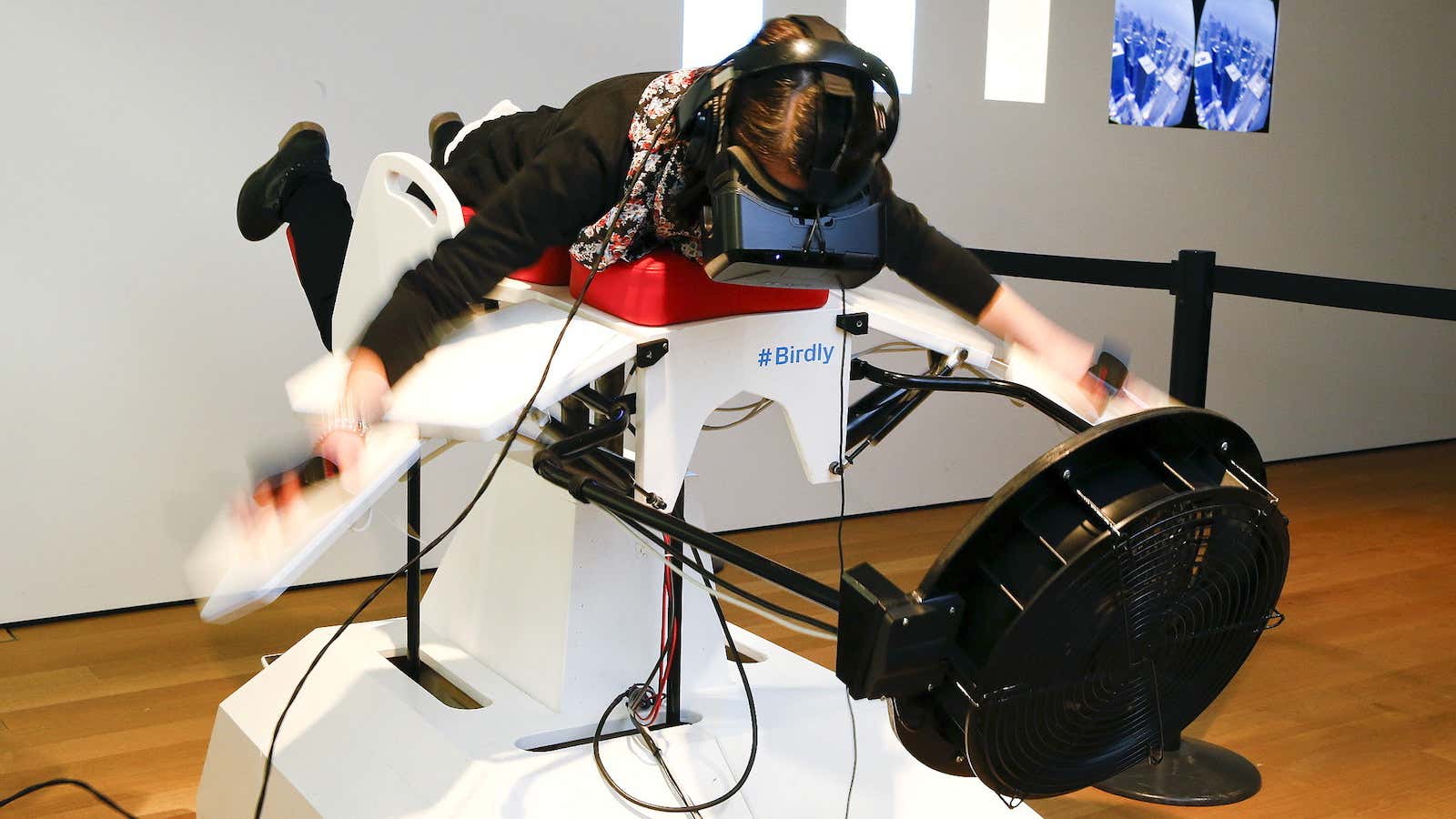Many of us grew up in a world in which mass media was uni-directional. We passively watched TV and movies, listened to music, and read newspapers and books without them interacting back. From the 1900s onward, we have sat in dark theaters, popcorn in hand, as the movie appeared before us on a flat screen.
And then came the internet, and with it the move towards more bi-directional forms of entertainment. The world wide web was the world’s first two-way mass medium. We, the active users, birthed a new and complicated wave of interaction with media whereby we became intimately and actively connected—we commented, shared, followed, gamed, crowdsourced, posted, and co-created.
And now the bar is rising even higher. The global technology market is growing at a steady rate of 4.5% and the US technology market is set to grow 5.9% in 2017. People’s expectations for engagement are now greater than ever before, and the tech giants are embracing virtual reality (VR), augmented reality, mixed reality, haptic user interfaces, and artificial intelligence as tools to tell stories. We demand not only to be entertained, but also to be the author of the story, the movie, or the song—to actually be in the game or at the center of the photo shoot. We want to be the hero of every interaction.
This is the Age of Agency, and I believe the convergence of old and new technologies is the biggest paradigm shift in the entertainment industry of the 21st century.
We are a people obsessed with entertaining our brains: The average American currently watches more than 30 hours of television a week, reads about five books a year and attends the theater an average of 2.3 times a year. Everywhere we turn we are surrounded by media—we are over-saturated, hard to impress, and our attention spans are short.
This summer, I watched hundreds of New Yorkers on a desperate hunt for Pokémon stumble through Central Park, noses glued to the augmented reality game on their phones. Last year, the New York Times teamed up with Google to provide their audience with a Google Cardboard VR viewer on which to trial their NYTVR virtual reality app. These are just two examples of the ways that we are now encouraged to be active participants in our own stories.
These new multisensory, personalized, and participatory experiences allow us to have experiences that were once beyond our capabilities. Visceral experiences such as the VR flight simulator Birdly (shown above) let us sample the sensation of flying like a bird across the world. The creators of Famous Deaths, a smell-and-sound experience in which you are entombed in a fake morgue coffin, re-create the final moments before John F. Kennedy’s assassination and Whitney Houston’s overdose—with you as the soon-to-be-deceased. Many 360-video documentaries place us in locations many of us would otherwise never be able to travel to, such as the war-torn neighborhoods of Syria and the bull-fighting rings of Spain. Home: A VR Spacewalk even gives you the opportunity to experience a spacewalk 250 miles above Earth. The simulator was inspired by NASA’s training program and the astonishing experiences of astronauts—and it’s about as close as the average person will get to space travel (until Elon Musk takes us to Mars, anyway).
In the past, experiences such as bird flight, historical events, exotic travel daydreams, and extra-terrestrial space floats could only be experienced through passive report-reading and reflection. But now we have the chance to not just passively observe these experiences, but actually feel like we’re living them. Gone are the days where we asked to be entertained—now we want to entertain ourselves.
So how far can we go before these technologies consume our analog existence? The value of human experience is built in connection, touch, and emotion. It cannot be replaced by technology—only amplified by it. The brain needs many types of stimuli to thrive, but the analog is what keeps the heart beating, the eyes sparkling and the lips smiling. Human touch, the sound of live music, the beauty of nature, the feel of a warm breeze on your arms, a kiss—they can be imitated but never duplicated.
But that’s not going to stop us from trying. In a contemporary world where we are asking to be entertained in grander and grander ways, Shakespeare’s famous quote from As You Like It—“All the world’s a stage, and all the men and women merely players”—has never made more sense.
